Entertainment
How Mad Magazine’s humor created a revolution
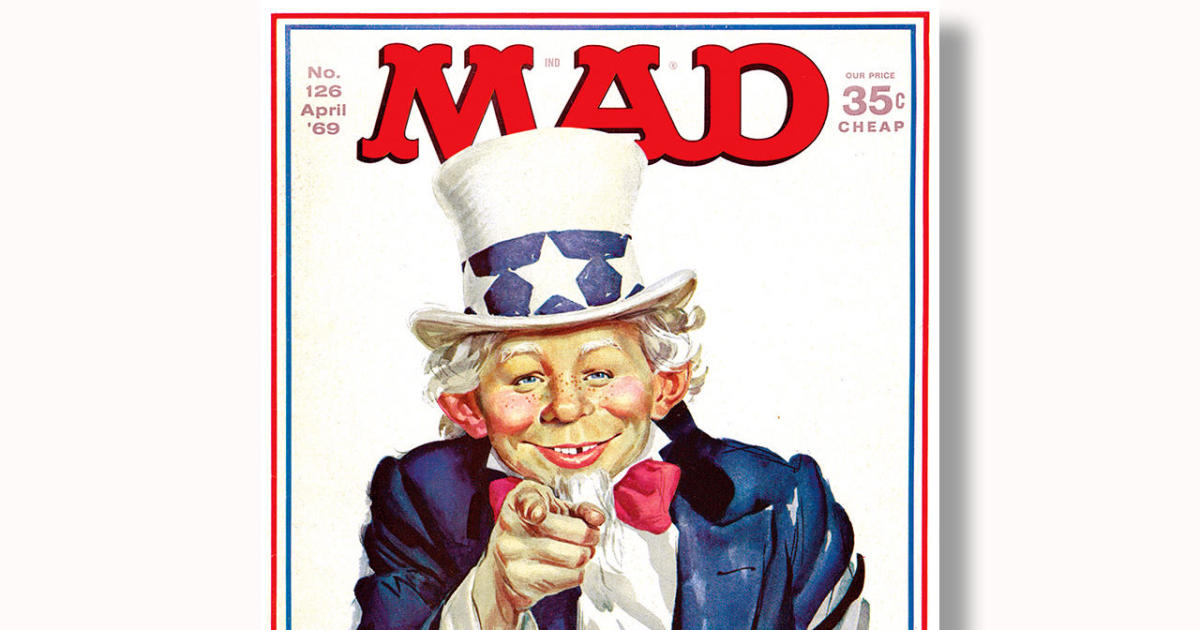
Nestled the rolling hills of rural Massachusetts. swathed by manicured grounds, sits the Norman Rockwell Museum. And there, side-by-side with the wholesome works of America’s most beloved illustrator, is the world’s dumbest cover boy: Alfred E. Neuman.
“It’s sacrilegious! It’s an outrage!” laughed political cartoonist Steve Brodner. “But I do think if Norman Rockwell were here, he’d laugh his head off. He’d think this was fantastic.”
These hallowed halls are now home to the world’s largest exhibit of artwork from Mad Magazine, co-curated by Brodner. “I was formed by Mad,” he said. “My idea of comedy, humor, irreverent drawing comes from this.”
Mad began in 1952 as a comic book that made fun of other comic books. But if you came of age during Mad’s peak – the sixties, seventies and eighties – you know what it became: A hilarious guide to the hypocrisy of the authority figures in your life, whom Mad kept characterizing as idiots. “I know! Isn’t that marvelous?” said Brodner.
Mad made fun of dumb ads, and dumb politicians, and dumb trends:
And, of course, dumb movies.
They made fun of the government, corporations, and even parents. “That’s why parents were really not too pleased with Mad,” said John Ficarra, who was the editor of Mad for 33 years
Writer Dick DeBartolo was around even longer: “I have been in every issue for about 55 years, and I got paid for about half of them,” he laughed.
DeBartolo wrote hundreds of movie parodies, including “The Da Vinci Coma,” “Star Bores: The Empire Strikes Out,” and “TryPanic.”
Pogue said, “I remember, as one of those readers, not understanding all the jokes. Sometimes you were making fun of stuff that were over my head.”
“Well, that was sort of the charm,” said Ficarra. “And we figured, either kids’ll get it or they won’t, and they’ll look it up and find out. Or, five years later they’re looking at old Mads and, Oh, now I get that joke.“
Mad’s artists and writers called themselves “the usual gang of idiots.” And when they said usual, they meant it; they tended to work for Mad for decades, including Al Jaffee, whose art appeared in every issue but one for 65 years. He died last year at 102.
In 1978 Jaffe told CBS’ “30 Minutes,” “People have been doing satire one way or another throughout the ages. The only difference is, most of them wound up in dungeons, and we wind up on the newsstand.”
Brodner called Jaffee one of the geniuses of Mad, who concocted the interior back page, which turned into a “fold-in.”
But one Mad artist gets a whole museum room: Mort Drucker, who died in 2020. “Everything is experimentation,” Drucker once said. “And that’s the fun of it all, once you get a handle on what a good artist is supposed to be and do.”
“He really loved people, and I think that’s why he was such a successful caricaturist,” said Mort Drucker’s daughter, Laurie Drucker Bachner. “Because he, like, inhaled the persona of somebody, and wanted them to be realized in the best way possible.”
Oddly enough, Drucker did not have professional training. “He did go to Parsons for three months, and they told him he really was ‘not cut out to be an artist,’” said his daughter. “He was pretty devastated, you know, ’cause he always thought of himself as an artist.”
Drucker went on to draw for Mad for over 50 years.
At its peak in 1974, Mad sold 2.1 million copies. It was wildly profitable, even though Bill Gaines (its publisher from the magazine’s founding until his death in 1992) refused to accept advertising. “This is just a thing with me: I’ve always been against ads,” Gaines told “30 Minutes.” “It’s a good thing to publish, if you can, without any outside help, so you’re not beholden to anybody.”
But eventually, readership began to decline. People have all kinds of theories as to why: magazines began dying off, the ‘usual gang of idiots’ began dying off, the internet happened.
And then, there was the ownership problem, according to Ficarra: “Bill sold it to a guy who owned another magazine that was losing money. They sold it to, I think, a holding company. We became part of Warner Publishing. And then, just as I was leaving, AT&T bought the company, really screwed it up (please don’t cut that out!), and sold it again now to Discovery.”
DeBartolo said, “For a very brief time, I think it was just a month, it was Smucker’s Jams and Jellies! We thought, ‘How did we get there?‘”
Mad’s last regular issue came out in April 2018; the Mad exhibition runs through the end of October. But the Mad influence still runs strong, its impact acknowledged by “The Simpsons,” Weird All Yankovic, Stephen Colbert and Jon Stewart. Laurie Drucker Bachner said, had there been no Mad, “You think there would have been ‘SNL’? Or any of the standups?”
Brodner said, “Mad actually created a revolution in the United States. People are still saying, ‘I don’t believe that. I’m gonna investigate this and see what the truth of it is.’ And I think that’s what Mad is saying: Don’t buy the con, you know?“
For more info:
- Mad Magazine
- Exhibition: “What, Me Worry? The Art and Humor of Mad Magazine,” at the Norman Rockwell Museum, Stockbridge, Mass. (though October 27) | Exhibition magazine
- Cartoonist Steve Brodner
- MAD and all related elements © and TM E.C. Publications. Courtesy of DC
- Norman Rockwell images courtesy of Norman Rockwell Museum. © SEPS, Curtis Licensing and/or Norman Rockwell Family Agency
- Norman Rockwell Museum video footage © Norman Rockwell Museum; all rights reserved. Used with permission.
- Drone & aerial footage by Richard Sands & Terry Holland
Story produced by Robert Marston. Editor: George Pozderec.
Entertainment
Facehuggers to Headbites: The Many Ways a Xenomorph Can End You
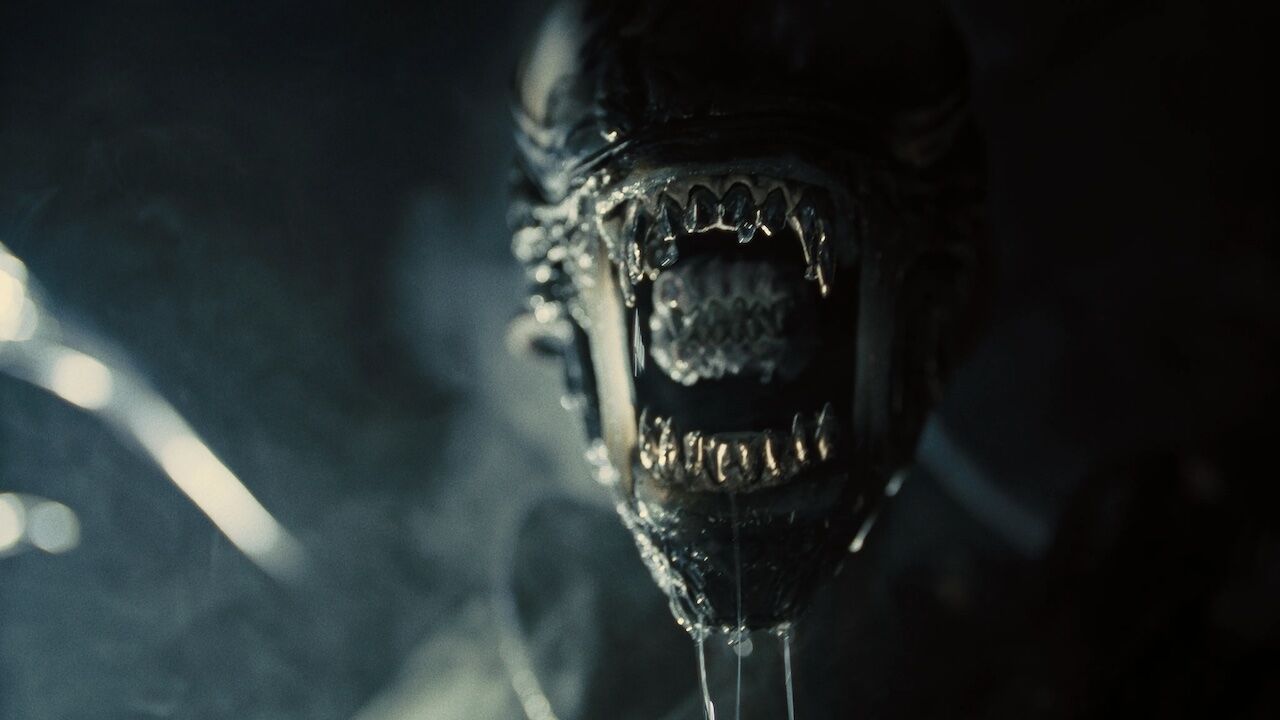
The longstanding sci-fi horror franchise, Alien, is going back to basics in the upcoming release of Alien: Romulus by highlighting just how fragile we squishy humans are compared to the indomitable alien nightmare fuel known as the Xenomorphs. How deadly you say? Well, you’d think being deadly was deadly enough, but since you asked, check out our video to learn all the terrible ways a Xenomorph can end you.
Check out Alien: Romulus when it hits cinemas on August 16th
TV
Killer Erik Menendez accuses Netflix’s ‘dishonest’ Monsters of ‘disheartening slander’

Erik Menendez has described the new Netflix series Monsters: The Lyle and Erik Menendez Story as a “dishonest portrayal” of the crimes he committed with his brother Lyle, accusing the show’s creator Ryan Murphy of “disheartening slander.”
The Menendez brothers were convicted of the 1989 murders of their parents, José and Kitty. They were arrested for first-degree murder and conspiracy to commit murder outside their home in March 1990 and sentenced to life in prison in 1996. In 2024, new evidence emerged that has the potential to set them free.
Monsters stars Javier Bardem and Chloë Sevigny as José and Kitty, with Nicholas Chavez and Cooper Koch as the brothers. The drama includes the harrowing sexual abuse that Lyle and Erik alleged to have been perpetrated by their father, but Erik Menendez has accused Murphy of distorting the truth.
Menendez responded to the series in a statement posted to X/Twitter by his wife, Tammi. It reads: “I believed we had moved beyond the lies and ruinous character portrayals of Lyle, creating a caricature of Lyle rooted in horrible and blatant lies rampant in the show. I can only believe they were done so on purpose.
“It is with a heavy heart that I say, I believe Ryan Murphy cannot be this naive and inaccurate about the facts of our lives so as to do this without bad intent.

“It is sad for me to know that Netflix’s dishonest portrayal of the tragedies surrounding our crime have taken the painful truths several steps backward – back through time to an era when the prosecution built a narrative on a belief system that males were not sexually abused, and that males experienced rape trauma differently than women.
“Those awful lies have been disputed and exposed by countless brave victims over the last two decades who have broken through their personal shame and bravely spoken out. So now Murphy shapes his horrible narrative through vile and appalling character portrayals of Lyle and of me and disheartening slander.
He continued: “Is the truth not enough? Let the truth stand as the truth. How demoralizing to know that one man with power can undermine decades of progress in shedding light on childhood trauma. Violence is never an answer, never a solution, and is always tragic.

Watch Apple TV+ free for 7 days
New subscribers only. £8.99/mo. after free trial. Plan auto-renews until cancelled

Watch Apple TV+ free for 7 days
New subscribers only. £8.99/mo. after free trial. Plan auto-renews until cancelled
“As such, I hope it is never forgotten that violence against a child creates a hundred horrendous and silent crime scenes darkly shadowed behind glitter and glamor and rarely exposed until tragedy penetrates everyone involved. To all those who have reached out and supported me, thank you from the bottom of my heart.”
The Independent has contacted Murphy’s representative for comment.
Since the series arrived on Netflix on Thursday, viewers have been cautioning others on social media about the graphic nature of the violence depicted in the show.
Entertainment
Hunt: Showdown 1896 Sets A New Rocky Mountain High For The Bounty Hunting FPS
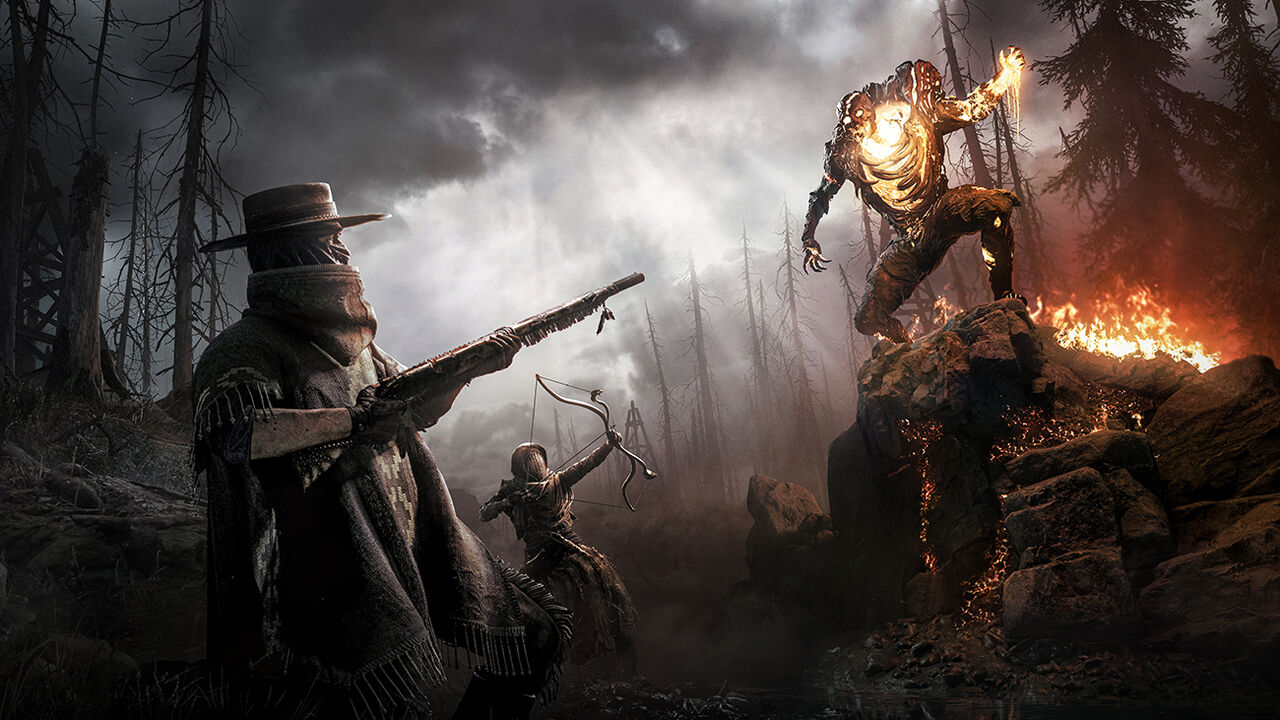
For six years now, Hunt: Showdown has been delighting players with intense and action-packed bounty hunting gameplay. Thousands of players have entered Stillwater Bayou and the other locations to hunt down the big bosses and collect that sweet hunter’s fee. Now, Crytek is taking the hunt even further with Hunt: Showdown 1896, which brings a new map, new look, and new features to the game on August 15.
1896 shifts the story forward one year–into, you guessed it, 1896–while also moving the action west, leaving the Louisiana bayou behind for the crisp, clean air of the Rockies in Colorado. The new locale does not mean the feeling of the hunt will change, as 1896 will still provide the “supernatural-meets-dark-realism” aesthetic players have grown to love.
Take 1896’s first map, Mammon’s Gulch, as a prime example. The Gulch adds literal layers of ground to work with during each hunt, as it will take you over the massive mountains of the Rockies, as well as into the depths of the earth in mines dug deep below the mountaintops. Whether you’re deep below the ground or climbing the highest peak, be careful: you never know who, or what, is lurking in the shadows.
Enter the Hellborn, one of 1896’s new major enemies. This fiery creep stalks Mammon’s Gulch silently, though its movements can be heard by listening in Dark Sight–a bounty hunter’s primary mechanic for finding clues. When startled, the Hellborn explodes with molten menace and attacks, and while that’s bad enough, the noise it makes can call enemy hunters to your location to take one less competitor out of the game.
1896 still provides the first-person gunslinging PvPvE gameplay of the original Showdown, but it immerses you in the world of the hunt better than ever. That’s thanks to CryEngine 5.11, which offers heightened visual fidelity and a crisp 60 FPS frame rate on consoles, along with reduced loading times and more responsive input.
Hunt: Showdown 1896 begins with the Scorched Earth event, which runs from August 15 to October 7. Three Pacts will be available to players during this event, and details on each one are below:
- The Wilderness Pact offers Surefoot, which allows you to sprint while using a First Aid Kit or priming a throwable weapon; Beastface, which negates broken branches and animal triggers; and Frontiersman, which offers an extra Pledge Mark for the first 30 Event Points collected in a mission.
- The Lawful Pact unlocks two traits which enhance looting: Peacekeeper restores health after looting a dead hunter, while Packmule finds extra ammo from the looted loser. This Pact also unlocks the Vigilant trait, which doubles Dark Sight’s range.
- The Demented Pact boosts melee damage with the Berserker trait, temporarily increases speed when at critical health with the Adrenaline trait, and restores health with every successful hit on a target with the Ghoul trail.
Despite the name change and new setting, this is still the same Hunt: Showdown experiences players have come to love. Even though there are dangerous monsters running around trying to end your hunt before it even begins, this universe still has roots in realistic human behavior. The choices you make–how to hunt, who to help, and who to betray–all hold weight, and every action will hold dire consequences for you and your team.
Hunt: Showdown 1896 is out now for Xbox Series X|S, PlayStation 5, and PC. If you’re interested in the game grab yourself a copy so you can try your bounty hunting hand during the Scorched Earth event.
TV
lg tv startup and shut down sounds + screens
Entertainment
Fandom Launches Superman Vs. The KKK Serialized Podcast
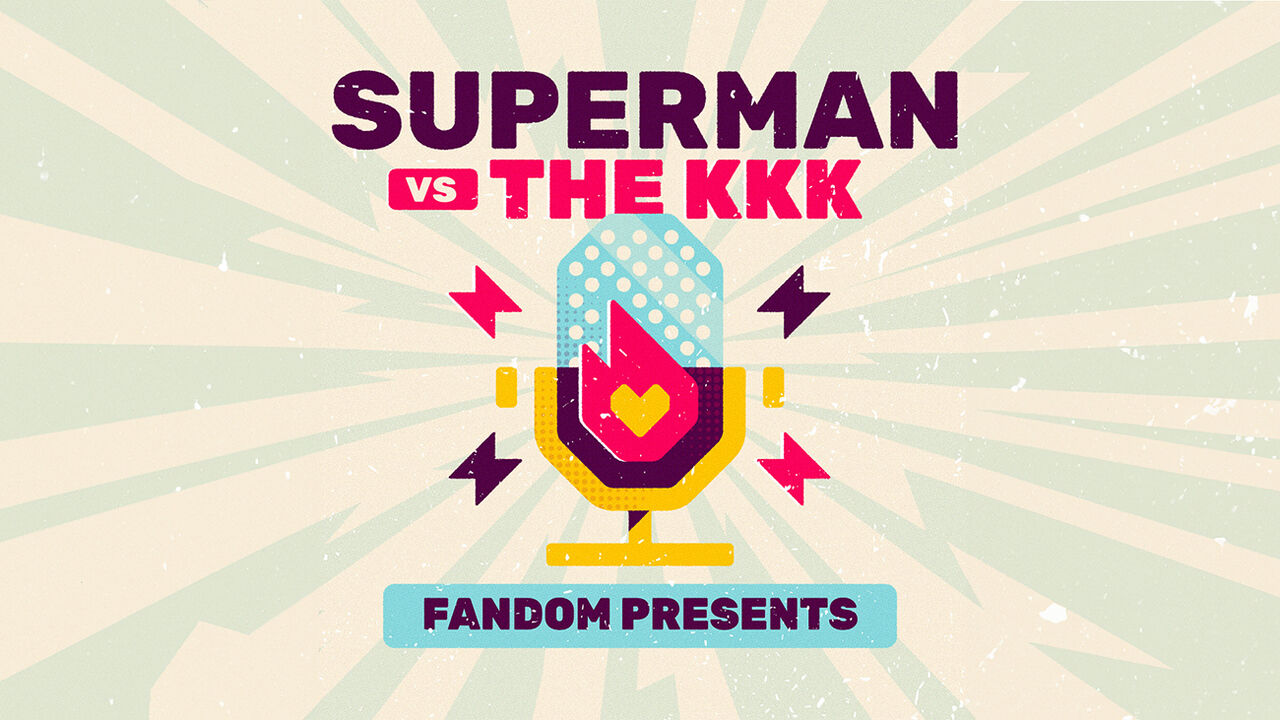
Nearly eight decades ago, The Adventures of Superman radio show pitted the Man of Steel against the forces of hate and white supremacy while exposing the inner workings of the Ku Klux Klan. Now, Fandom is releasing a new five-part serial podcast, looking at the creation and historical significance of Superman vs.The KKK, which is available now.
The podcast–which is partially inspired by author Rick Bowers’ book, Superman vs. The Ku Klux Klan–chronicles the way that the 1946 storyline, “Clan of the Fiery Cross” confronted the entangled history of the KKK in American life, and disavowed the reality of its racist violence; offering a new, powerful version of “The American Way” that would last for generations.
The podcast explores the inception and rise in popularity of both Superman and the Klan, how they each used the tools of the media to brand and sell their version of what it means to be “100% American,” and how the two became intertwined in this iconic story arc. In this series, we discover how the clash between these two versions of “The American Way”–and the ensuing battle for the heart’s of the United States citizens–developed, and why that fight has never been more relevant. It’s a fascinating exploration for anyone who is a fan of the Man of Steel, comic-book culture, and the complexities of American history.
Executive producer Roth Cornet hosts the podcast alongside celebrated journalist, writer, and podcaster Marc Bernardin.
“This story is an incredible mix of journalism, brand activism, and the power of pop culture to change the world,” said Cornet. “We live in an era where fans identify themselves by the things they love, so there is incredible power in harnessing this passion to make an impact.”
Even after 80 years, Superman remains a stalwart fixture at the forefront of pop culture as we await DC studios newest iteration of the iconic hero. Whether another version of Superman can ever again cross from his fictional universe to impact ours, remains to be seen.
Episodes of Superman vs. The KKK are available now on all podcasting platforms, including Apple, iHeartRadio, and Spotify.

Freelance writer for almost every major geek outlet, including Fandom!
Entertainment
Can Colin Farrell Handle The Dramatic Transformation into The Penguin?
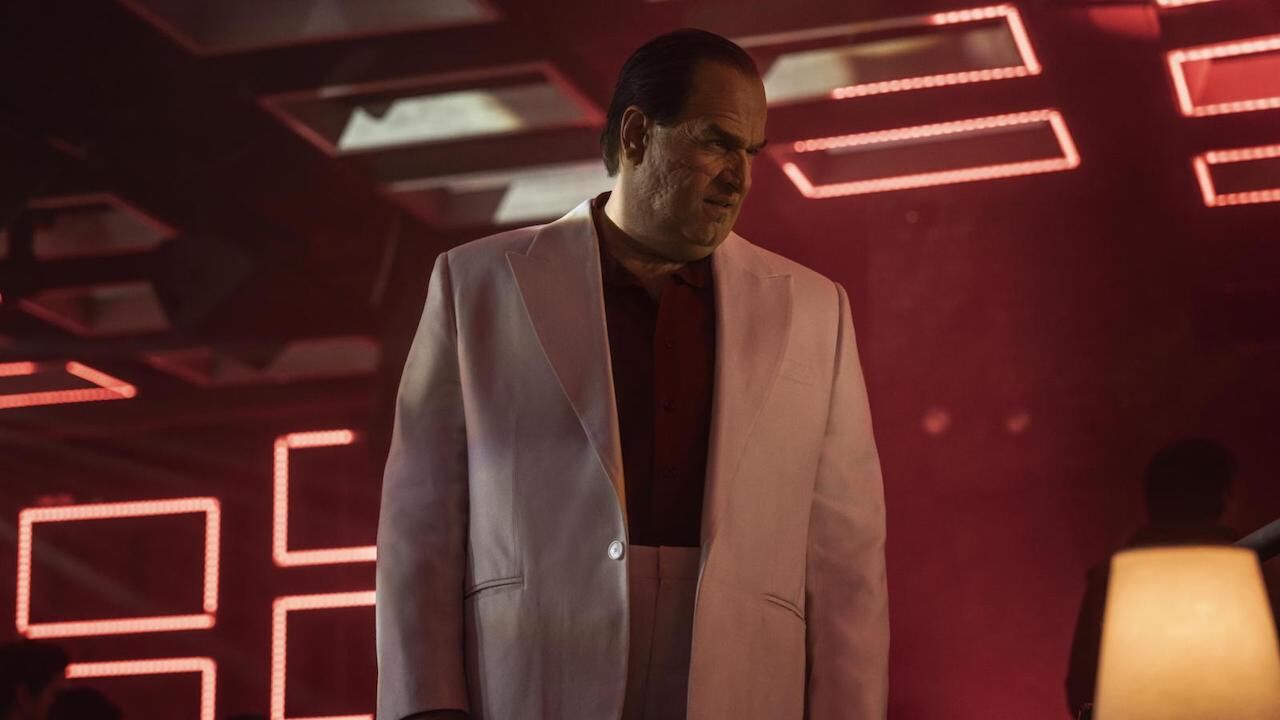
The next chapter of Matt Reeves’ Batman Saga is almost here, and like an umbrella stand at the Iceberg Lounge, there’s a lot more going on than you’d expect. For one, it’s set in a grittier Gotham that brings Reeves’ noir vision to the small screen. But perhaps the most talked-about element of The Penguin is its immaculate casting for the lead role of Oswald Cobblepot. Colin Farrell is set to return as the ringleader of Gotham’s criminal underworld and while we got a peek into his life and approach to his work only briefly in The Batman, the series is set to offer us a chance to peel back the curtain and see the inner workings of the festering underbelly of the city, all through the lens of the man who intends to call the shots. What seems to be the greatest draw, though, is learning who exactly Oz Cobblepot is, and how Reeves intends to bring the kingpin to life. Here’s all you need to know about the quietly menacing Cobblepot, and exactly what Colin Farrell can bring to the role.
Oswald Cobblepot
We’re all familiar with the monocle-wearing criminal mastermind, Oswald Cobblepot, brought to life in cartoonish detail in the comics and transformed into a sewer-dwelling wretch in Batman Returns. But the Penguin we meet in The Batman is a new direction to fit with Reeve’s modernised and bleak Gotham. Oz has a peculiar charm about him that tells you he’s a bad person, but not necessarily a bad guy (or at the very least, a guy we’d want to keep an eye on). He meets Batman with grace and candour, and though he certainly has plenty to hide, he doesn’t resist the opportunity to resolve things quietly. His greatest power though, is his reputation: years of running the streets of Gotham and remaining a key figure in the criminal underbelly of the city have granted him incredible protection and a target on his back in equal measure. But it’s his deceit and ruthlessness – along with a willingness to get his hands dirty – that has made him so fearsome that few dare to test him.
In the Penguin trailer, we also see another side to Cobblepot when he comes face-to-face with Sofia Falcone; his facade slips away to reveal a paranoia and vulnerability which threatens to consume him. Oz certainly isn’t invincible, but his determination to give his mother a better life and dominate the drug ring that rules the city makes him vicious and unpredictable. And few actors are as well equipped to bring the complicated man to life as Colin Farrell.
Melancholy
Colin Farrell has played various roles throughout his career which have allowed him to connect with a range of personalities, from charming to terrifying. The Batman depiction of Oz carries the same polarising attributes and with Farrell’s repertoire of character portrayals, it will be interesting to see how he embodies Oz in The Penguin.
There is a sadness lurking in the heart of the crime boss, and it’s a melancholy that draws him to his determination. Penguin’s guilt over not being able to provide enough for his mother is a key driving force behind his ferocity and it’s safe to say that there will be more going on with the character than what has been revealed so far.
With roles like The Banshees of Inisherin’s Pádraic Súilleabháin and The Killing of a Sacred Deer’s Steven Murphy – in which both characters bury emotions they refuse to confront – Farrell has proven he can access the sadness buried beneath the rage of Oz. We’re likely to see The Penguin during his most vulnerable moments in this series, and this sadness is set to come tumbling through his devised smoke and mirrors.
Rage
Anger is key to Oz’s fearsomeness. When we see him let loose with a machine gun in The Batman, it’s his fury that he needs to thank for his murderous outburst. The Penguin is violently ambitious and Farrell’s experience as an unpredictable villain with no remorse will be an important asset as the series unravels Oz’s inner workings. The quietly ferocious Mister Graves of Fantastic Beasts and Where to Find Them and even Bullseye in the early 00s’ Daredevil has made Farrell fit to bring such a menacing figure to life in the most chaotic, frenzied way.
But it’s the barely suppressed desire for violent retribution that creates the uneasy feeling that you’re never safe around Penguin. Farrell’s recent stint as the terrifying Henry Drax in The North Water is the perfect example of how he – once known for being adorable Irish eye candy – has the range to bring a subtly horrific character to life.
Charm
A good handshake can go a long way in disarming potential foes, and The Penguin’s Oz has these in droves. He’s an incredibly charming man who would appear to be well-meaning if you perhaps didn’t know that he was king of Gotham’s underworld. Colin Farrell is more than charismatic enough to complement Oz’s charm, as well as bring a few laughs.
His work on In Bruges, Horrible Bosses, and even Scrubs proves that the snarky and humorous side of Oswald Cobblepot isn’t going to be set aside in favour of total moodiness. Though we certainly wouldn’t laugh in his face, we’re bound to get some precise comedic moments from the snide, sarcastic crime boss.
While this variation of Penguin is likely to go light on trick umbrellas and jaunty top hats, what we are getting is the most fleshed-out Oswald Cobblepot we’ve ever seen. He’s not just a fearsome crime boss but also a complex man who has used violence to shelter himself from misery. While Farrell might be visually unrecognisable under all those prosthetics, there’s no denying that Cobblepot wouldn’t have the same level of depth without him.
Watch The Penguin when it arrives on Sky and NOW on September 20.

Entertainment Journalist, author of Building A Universe, big Greta Gerwig stan
-

 News4 days ago
News4 days agoYou’re a Hypocrite, And So Am I
-

 Sport3 days ago
Sport3 days agoJoshua vs Dubois: Chris Eubank Jr says ‘AJ’ could beat Tyson Fury and any other heavyweight in the world
-

 CryptoCurrency3 days ago
CryptoCurrency3 days agoEthereum is a 'contrarian bet' into 2025, says Bitwise exec
-

 News6 hours ago
News6 hours agoOur millionaire neighbour blocks us from using public footpath & screams at us in street.. it’s like living in a WARZONE – WordupNews
-

 Technology4 days ago
Technology4 days agoWould-be reality TV contestants ‘not looking real’
-

 Science & Environment4 days ago
Science & Environment4 days agoHow to unsnarl a tangle of threads, according to physics
-

 CryptoCurrency3 days ago
CryptoCurrency3 days agoDorsey’s ‘marketplace of algorithms’ could fix social media… so why hasn’t it?
-

 CryptoCurrency3 days ago
CryptoCurrency3 days agoDZ Bank partners with Boerse Stuttgart for crypto trading
-

 CryptoCurrency3 days ago
CryptoCurrency3 days agoLow users, sex predators kill Korean metaverses, 3AC sues Terra: Asia Express
-

 Science & Environment3 days ago
Science & Environment3 days ago‘Running of the bulls’ festival crowds move like charged particles
-

 News3 days ago
News3 days agoIsrael strikes Lebanese targets as Hizbollah chief warns of ‘red lines’ crossed
-

 CryptoCurrency3 days ago
CryptoCurrency3 days agoBitcoin miners steamrolled after electricity thefts, exchange ‘closure’ scam: Asia Express
-

 CryptoCurrency3 days ago
CryptoCurrency3 days agoRedStone integrates first oracle price feeds on TON blockchain
-

 CryptoCurrency3 days ago
CryptoCurrency3 days agoBitcoin bulls target $64K BTC price hurdle as US stocks eye new record
-

 CryptoCurrency3 days ago
CryptoCurrency3 days agoVitalik tells Ethereum L2s ‘Stage 1 or GTFO’ — Who makes the cut?
-

 CryptoCurrency3 days ago
CryptoCurrency3 days agoBlockdaemon mulls 2026 IPO: Report
-

 Science & Environment3 days ago
Science & Environment3 days agoQuantum ‘supersolid’ matter stirred using magnets
-

 Sport3 days ago
Sport3 days agoUFC Edmonton fight card revealed, including Brandon Moreno vs. Amir Albazi headliner
-

 Science & Environment3 days ago
Science & Environment3 days agoHyperelastic gel is one of the stretchiest materials known to science
-

 Science & Environment3 days ago
Science & Environment3 days agoQuantum forces used to automatically assemble tiny device
-

 Health & fitness4 days ago
Health & fitness4 days agoThe secret to a six pack – and how to keep your washboard abs in 2022
-

 CryptoCurrency3 days ago
CryptoCurrency3 days agoCardano founder to meet Argentina president Javier Milei
-

 CryptoCurrency3 days ago
CryptoCurrency3 days agoCertiK Ventures discloses $45M investment plan to boost Web3
-

 CryptoCurrency3 days ago
CryptoCurrency3 days agoVonMises bought 60 CryptoPunks in a month before the price spiked: NFT Collector
-

 CryptoCurrency3 days ago
CryptoCurrency3 days agoSEC asks court for four months to produce documents for Coinbase
-

 CryptoCurrency3 days ago
CryptoCurrency3 days ago‘Silly’ to shade Ethereum, the ‘Microsoft of blockchains’ — Bitwise exec
-

 CryptoCurrency3 days ago
CryptoCurrency3 days ago‘No matter how bad it gets, there’s a lot going on with NFTs’: 24 Hours of Art, NFT Creator
-

 CryptoCurrency3 days ago
CryptoCurrency3 days agoCoinbase’s cbBTC surges to third-largest wrapped BTC token in just one week
-
Travel1 hour ago
Where Retro Glamour Meets Modern Chic in Athens, Greece
-

 Technology3 days ago
Technology3 days agoiPhone 15 Pro Max Camera Review: Depth and Reach
-

 Science & Environment3 days ago
Science & Environment3 days agoHow one theory ties together everything we know about the universe
-

 Science & Environment4 days ago
Science & Environment4 days agoSunlight-trapping device can generate temperatures over 1000°C
-

 News3 days ago
News3 days agoBrian Tyree Henry on voicing young Megatron, his love for villain roles
-

 Science & Environment4 days ago
Science & Environment4 days agoTime travel sci-fi novel is a rip-roaringly good thought experiment
-

 Science & Environment4 days ago
Science & Environment4 days agoLaser helps turn an electron into a coil of mass and charge
-

 Science & Environment4 days ago
Science & Environment4 days agoITER: Is the world’s biggest fusion experiment dead after new delay to 2035?
-

 Science & Environment4 days ago
Science & Environment4 days agoLiquid crystals could improve quantum communication devices
-

 Science & Environment4 days ago
Science & Environment4 days agoHow to wrap your mind around the real multiverse
-

 Science & Environment4 days ago
Science & Environment4 days agoPhysicists are grappling with their own reproducibility crisis
-

 Science & Environment3 days ago
Science & Environment3 days agoNuclear fusion experiment overcomes two key operating hurdles
-

 CryptoCurrency3 days ago
CryptoCurrency3 days ago$12.1M fraud suspect with ‘new face’ arrested, crypto scam boiler rooms busted: Asia Express
-

 CryptoCurrency3 days ago
CryptoCurrency3 days agoEthereum falls to new 42-month low vs. Bitcoin — Bottom or more pain ahead?
-

 CryptoCurrency3 days ago
CryptoCurrency3 days agoETH falls 6% amid Trump assassination attempt, looming rate cuts, ‘FUD’ wave
-

 CryptoCurrency3 days ago
CryptoCurrency3 days agoBitcoin options markets reduce risk hedges — Are new range highs in sight?
-

 News3 days ago
News3 days agoChurch same-sex split affecting bishop appointments
-

 Politics5 days ago
Politics5 days agoTrump says he will meet with Indian Prime Minister Narendra Modi next week
-

 Science & Environment4 days ago
Science & Environment4 days agoWhy this is a golden age for life to thrive across the universe
-

 Technology5 days ago
Technology5 days agoCan technology fix the ‘broken’ concert ticketing system?
-

 Politics3 days ago
Politics3 days agoLabour MP urges UK government to nationalise Grangemouth refinery
-

 Science & Environment4 days ago
Science & Environment4 days agoMaxwell’s demon charges quantum batteries inside of a quantum computer
-

 Science & Environment4 days ago
Science & Environment4 days agoQuantum time travel: The experiment to ‘send a particle into the past’
-

 CryptoCurrency3 days ago
CryptoCurrency3 days ago2 auditors miss $27M Penpie flaw, Pythia’s ‘claim rewards’ bug: Crypto-Sec
-

 CryptoCurrency3 days ago
CryptoCurrency3 days agoHelp! My parents are addicted to Pi Network crypto tapper
-

 CryptoCurrency3 days ago
CryptoCurrency3 days agoCrypto scammers orchestrate massive hack on X but barely made $8K
-

 Science & Environment3 days ago
Science & Environment3 days agoWhy we need to invoke philosophy to judge bizarre concepts in science
-

 CryptoCurrency3 days ago
CryptoCurrency3 days agoSEC sues ‘fake’ crypto exchanges in first action on pig butchering scams
-

 CryptoCurrency3 days ago
CryptoCurrency3 days agoBitcoin price hits $62.6K as Fed 'crisis' move sparks US stocks warning
-

 CryptoCurrency3 days ago
CryptoCurrency3 days agoCZ and Binance face new lawsuit, RFK Jr suspends campaign, and more: Hodler’s Digest Aug. 18 – 24
-

 CryptoCurrency3 days ago
CryptoCurrency3 days agoBeat crypto airdrop bots, Illuvium’s new features coming, PGA Tour Rise: Web3 Gamer
-

 CryptoCurrency3 days ago
CryptoCurrency3 days agoMemecoins not the ‘right move’ for celebs, but DApps might be — Skale Labs CMO
-

 CryptoCurrency3 days ago
CryptoCurrency3 days agoTelegram bot Banana Gun’s users drained of over $1.9M
-
Politics3 days ago
The Guardian view on 10 Downing Street: Labour risks losing the plot | Editorial
-

 Politics3 days ago
Politics3 days agoI’m in control, says Keir Starmer after Sue Gray pay leaks
-
Business3 days ago
How Labour donor’s largesse tarnished government’s squeaky clean image
-
Politics3 days ago
‘Appalling’ rows over Sue Gray must stop, senior ministers say | Sue Gray
-
Business3 days ago
UK hospitals with potentially dangerous concrete to be redeveloped
-

 News3 days ago
News3 days agoSean “Diddy” Combs denied bail again in federal sex trafficking case
-

 Technology3 days ago
Technology3 days agoFivetran targets data security by adding Hybrid Deployment
-
Politics5 days ago
Starmer ally Hollie Ridley appointed as Labour general secretary | Labour
-

 Money4 days ago
Money4 days agoWhat estate agents get up to in your home – and how they’re being caught
-

 Business5 days ago
Business5 days agoGuardian in talks to sell world’s oldest Sunday paper
-
News3 days ago
Freed Between the Lines: Banned Books Week
-

 MMA3 days ago
MMA3 days agoUFC’s Cory Sandhagen says Deiveson Figueiredo turned down fight offer
-

 MMA3 days ago
MMA3 days agoDiego Lopes declines Movsar Evloev’s request to step in at UFC 307
-

 Football3 days ago
Football3 days agoSlot's midfield tweak key to Liverpool victory in Milan
-

 Science & Environment3 days ago
Science & Environment3 days agoHow to wrap your head around the most mind-bending theories of reality
-

 Fashion Models3 days ago
Fashion Models3 days agoMiranda Kerr nude
-

 Fashion Models3 days ago
Fashion Models3 days ago“Playmate of the Year” magazine covers of Playboy from 1971–1980
-

 News6 days ago
News6 days agoDid the Pandemic Break Our Brains?
-

 Politics5 days ago
Politics5 days agoTrump Media breached ARC Global share agreement, judge rules
-

 Science & Environment3 days ago
Science & Environment3 days agoA new kind of experiment at the Large Hadron Collider could unravel quantum reality
-

 Fashion Models3 days ago
Fashion Models3 days agoMixte
-

 Science & Environment3 days ago
Science & Environment3 days agoHow Peter Higgs revealed the forces that hold the universe together
-

 Science & Environment3 days ago
Science & Environment3 days agoOdd quantum property may let us chill things closer to absolute zero
-

 Science & Environment3 days ago
Science & Environment3 days agoRethinking space and time could let us do away with dark matter
-

 Entertainment3 days ago
Entertainment3 days ago“Jimmy Carter 100” concert celebrates former president’s 100th birthday
-

 News4 days ago
News4 days ago▶️ Media Bias: How They Spin Attack on Hezbollah and Ignore the Reality
-

 News4 days ago
News4 days agoRoad rage suspects in custody after gunshots, drivers ramming vehicles near Boise
-

 Science & Environment4 days ago
Science & Environment4 days agoNerve fibres in the brain could generate quantum entanglement
-
Business5 days ago
Glasgow to host scaled-back Commonwealth Games in 2026
-

 Science & Environment4 days ago
Science & Environment4 days agoX-ray laser fires most powerful pulse ever recorded
-
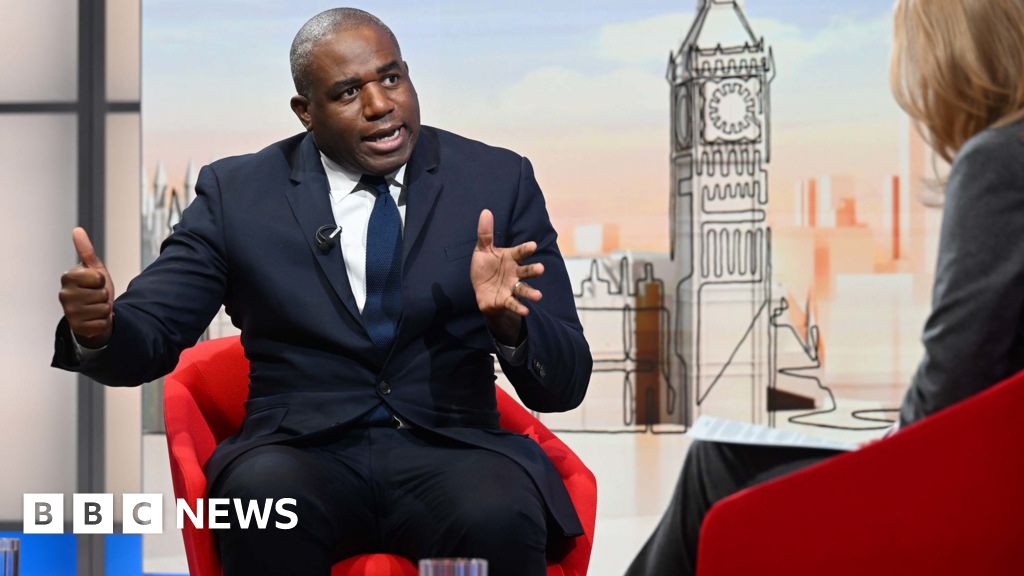
 Politics5 days ago
Politics5 days agoUkraine missile request for war with Russia under discussion
-

 Science & Environment3 days ago
Science & Environment3 days agoBeing in two places at once could make a quantum battery charge faster
-

 Health & fitness5 days ago
Health & fitness5 days agoWhat ‘elite sleepers’ can tell us all about the eight hour myth
-

 Science & Environment3 days ago
Science & Environment3 days agoWe may have spotted a parallel universe going backwards in time
-

 CryptoCurrency3 days ago
CryptoCurrency3 days agoTreason in Taiwan paid in Tether, East’s crypto exchange resurgence: Asia Express
-

 CryptoCurrency3 days ago
CryptoCurrency3 days agoJourneys: Robby Yung on Animoca’s Web3 investments, TON and the Mocaverse
-

 CryptoCurrency3 days ago
CryptoCurrency3 days agoLouisiana takes first crypto payment over Bitcoin Lightning
-

 CryptoCurrency3 days ago
CryptoCurrency3 days agoAre there ‘too many’ blockchains for gaming? Sui’s randomness feature: Web3 Gamer
-

 CryptoCurrency3 days ago
CryptoCurrency3 days ago‘Everything feels like it’s going to shit’: Peter McCormack reveals new podcast


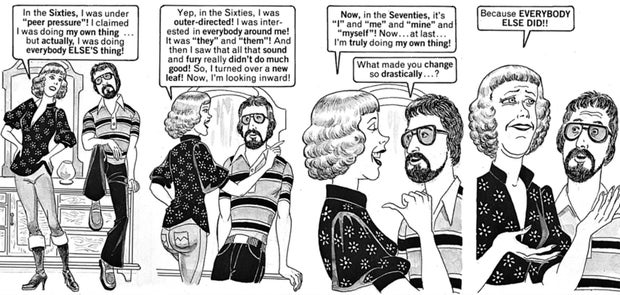


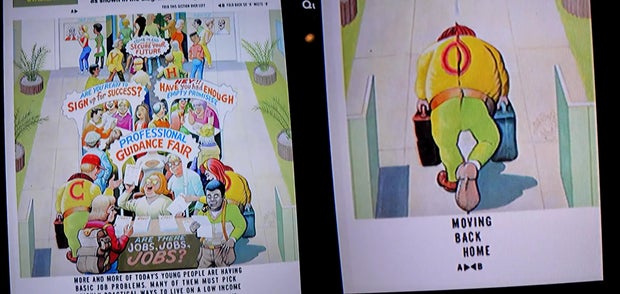
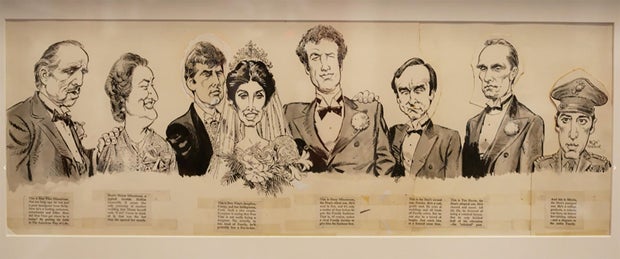



You must be logged in to post a comment Login